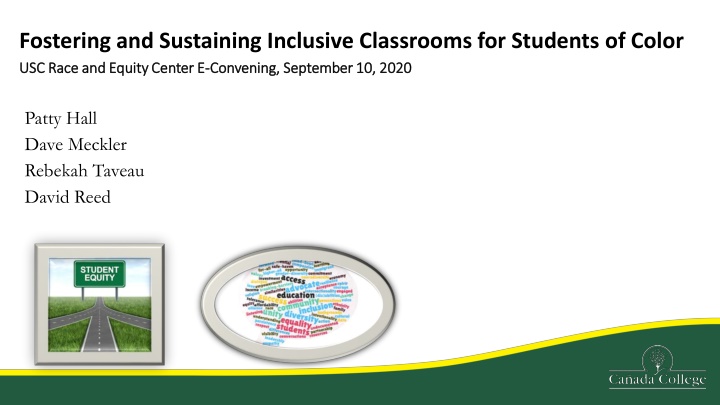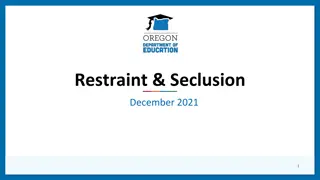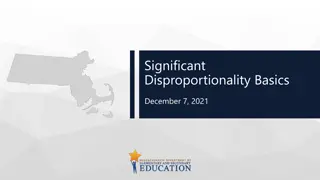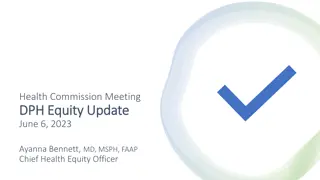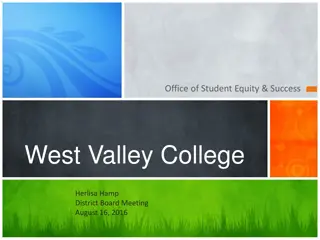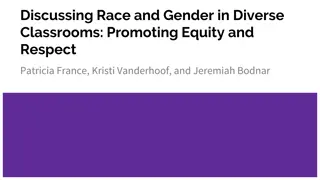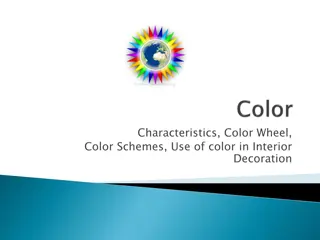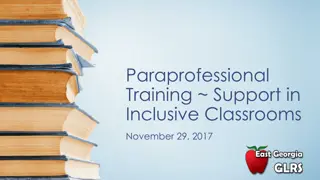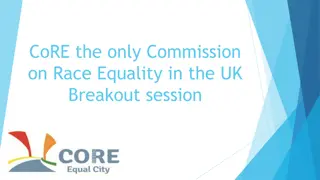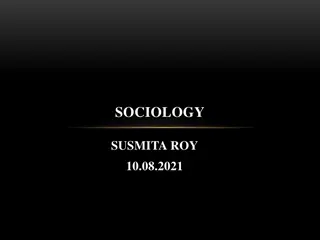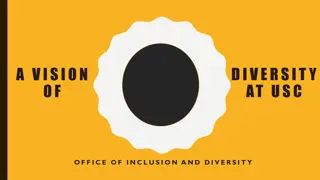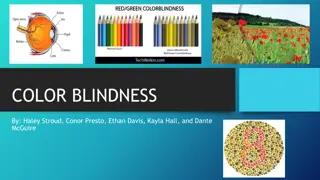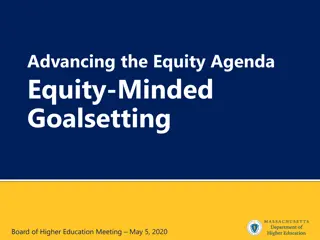Fostering Inclusive Classrooms for Students of Color at USC Race and Equity Center
USC Race and Equity Center hosts eConvenings focusing on fostering and sustaining inclusive classrooms for students of color. These sessions aim to increase awareness of key factors, expand strategies, and provide a virtual racial equity resource portal. Qualitative assessments, national insights, and research from 50+ campuses are utilized to address issues of belonging, micro-aggressions, cross-racial engagement, and institutional commitment.
Download Presentation

Please find below an Image/Link to download the presentation.
The content on the website is provided AS IS for your information and personal use only. It may not be sold, licensed, or shared on other websites without obtaining consent from the author.If you encounter any issues during the download, it is possible that the publisher has removed the file from their server.
You are allowed to download the files provided on this website for personal or commercial use, subject to the condition that they are used lawfully. All files are the property of their respective owners.
The content on the website is provided AS IS for your information and personal use only. It may not be sold, licensed, or shared on other websites without obtaining consent from the author.
E N D
Presentation Transcript
Fostering and Sustaining Inclusive Classrooms for Students of Color USC Race and Equity Center E USC Race and Equity Center E- -Convening, September 10, 2020 Convening, September 10, 2020 Patty Hall Dave Meckler Rebekah Taveau David Reed
Fostering and Sustaining Inclusive Classrooms for Students of Color USC Race and Equity Center E USC Race and Equity Center E- -Convening, September 10, 2020 Convening, September 10, 2020 Overview of Session Research behind the E-Convening Summary of Fostering and Sustaining Inclusive Classrooms for Students of Color key components Activity: Break out groups discuss how they/the college address/ needs to address the key components and share with whole group Goals Increase knowledge of key factors and needs Expand repertoire of strategies for addressing those factors
What is the USC Race and Equity Center E What is the USC Race and Equity Center E- -Convening? Convening? Professional learning: Started June 2020,12 eConvenings, each on a particular aspect of racial equity For faculty leaders, administrators and staff, different group of 5 people each time Virtual racial equity resource portal: Online repository of resources and tools for Alliance member colleges Downloadable equity-related rubrics, readings, case studies, videos, slide decks
Fostering and Sustaining Inclusive Classrooms for Students of Color USC Race and Equity Center E USC Race and Equity Center E- -Convening, September 10, 2020 Convening, September 10, 2020 The Research Qualitative assessments: 50 campuses across U.S., 15+ years, range institutions. Interviews 10,000+ recent graduates. Focus groups with Students of Color and White Students Specific racial groups: Latino males, Latina females, multi-racial etc.. Focus on: Sense of belonging in and outside of classrooms Get a sense of encounters with micro-aggressions and more overt and harmful manifestations Cross-racial engagement Appraisals of institutional commitment
Fostering and Sustaining Inclusive Classrooms for Students of Color USC Race and Equity Center E USC Race and Equity Center E- -Convening, September 10, 2020 Convening, September 10, 2020 The Research National Center Qualitative Assessment (NACC) Insights into the complexities of racial experiences Where and what students learn about race Feelings for preparedness in diverse democracy after college Administered to million students throughout CA and across U.S. since March 2019 Will go to every student in CA CC Racial Equity Leadership Alliance member Institutions Not sub-sample - every full and part time student
Fostering and Sustaining Inclusive Classrooms for Students of Color USC Race and Equity Center E USC Race and Equity Center E- -Convening, September 10, 2020 Convening, September 10, 2020 RESULTS: WHAT STUDENTS OF COLOR SAY THE PROBLEMS ARE: NINE KEY AREAS You will be choosing a pair of these to discuss with your colleagues! Please go to this link to tell us your breakout room preference: https://forms.gle/sXqNM9miiRh9tuRK6
Students of Color say the problems are. Students of Color say the problems are . 1. Curricular erasure 2. One-sided, deficit representation 3. Forced spokespersonship
Students of Color say the problems are. Students of Color say the problems are . 4. Being confused for another student from same ethnic/racial group even when they bear no resemblance. Assigning wrong name to wrong person, etc. 5. Faculty surprised or unbelieving of students academic performance
Students of Color say the problems are. Students of Color say the problems are . 6. Mispronouncing and refusing to learn names, especially Asian students names Asking/encouraging them to use an Americanized nickname that is easier to pronounce Suggests students name is not important/devalues that student in relation to others, not worth taking the time to learn
Students of Color say the problems are. Students of Color say the problems are . 7. Shortage of Faculty of Color Students of Color: do not feel affirmed when day after day, they don t see anyone teaching those courses who: looks like them Comes from where they come from Shares their racial identity. Colleges are stratified racially along classified staff/faculty lines
Students of Color say the problems are. Students of Color say the problems are . 8. No consequences for racist actions by instructors 9. No acknowledgement of racist statements
Group Activity: Which of t Group Activity: Which of the he top nine stand out to you? top nine stand out to you? DIRECTIONS: 1. Write your 1st and 2nd choice in the chat. 2. Accept the invitation to your break out room. In Break Out Room: 1. Introduce yourselves and immediately appoint: a. a facilitator to facilitate the discussion b. A note taker to share their screen and take summary notes on what your group says. Then paste them in this google doc before time is up. c. A reporter to report back to whole group when we return to main zoom 2. Discuss how you/the college address/es or needs to address the problem
Break Out Group Reporters Take Turns Sharing: 1. Which of the problems did your break out group discuss? 2. What solutions/strategies do you/the college use? 3. What solutions/strategies are needed? Add your notes to this group document: NOTES in google doc
Conclusion (1 min) David? Key Ideas Which of the top 10 negative experiences seemed most relevant? What tools or approaches were identified? Next Steps: Upload to PD and ACES websites Upcoming related events and trainings (next USC eConvening, CIETL Sessions, Brown Bags, Flex events, etc.) THANK YOU FOR YOUR PARTICIPATION!
